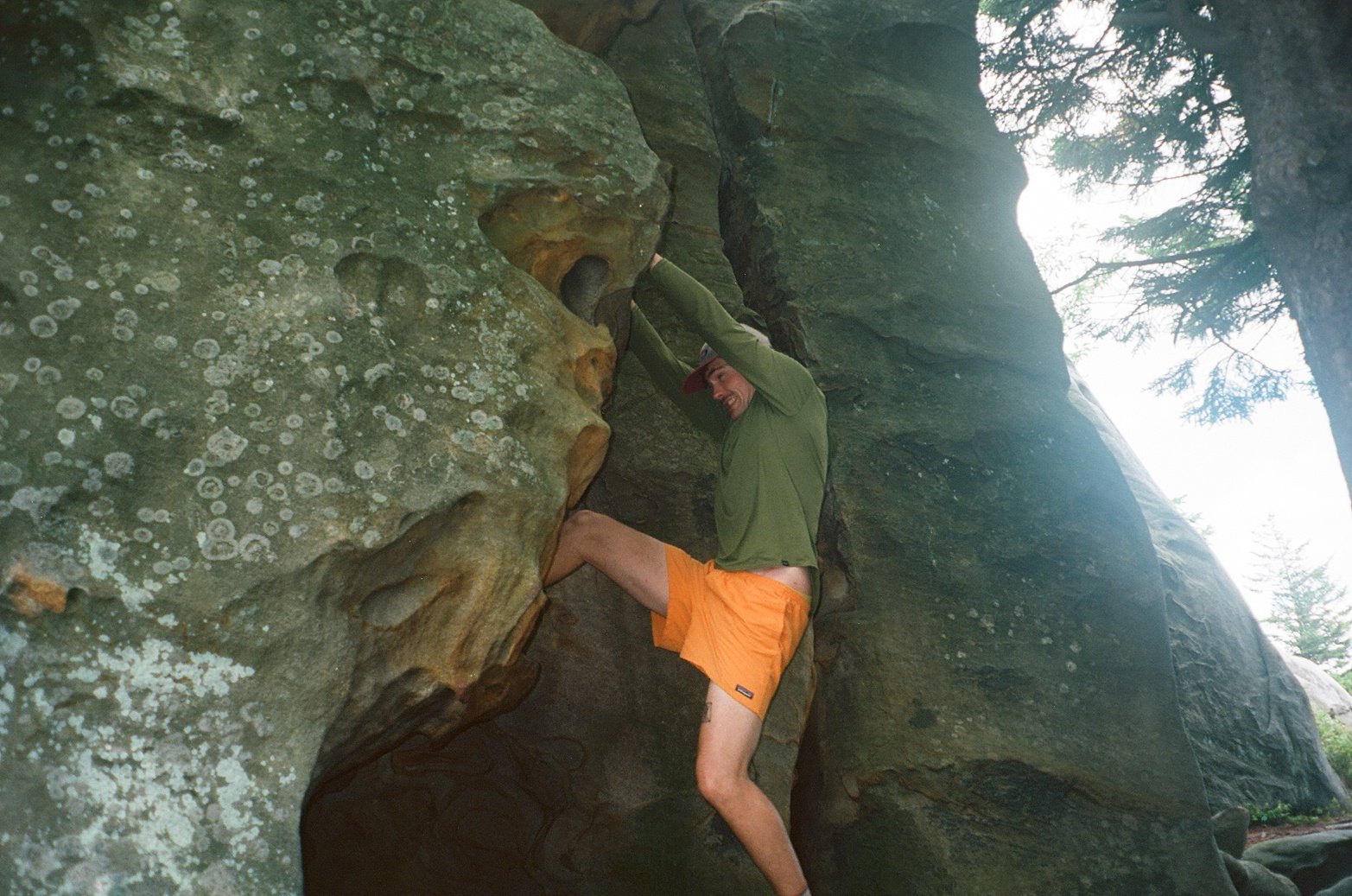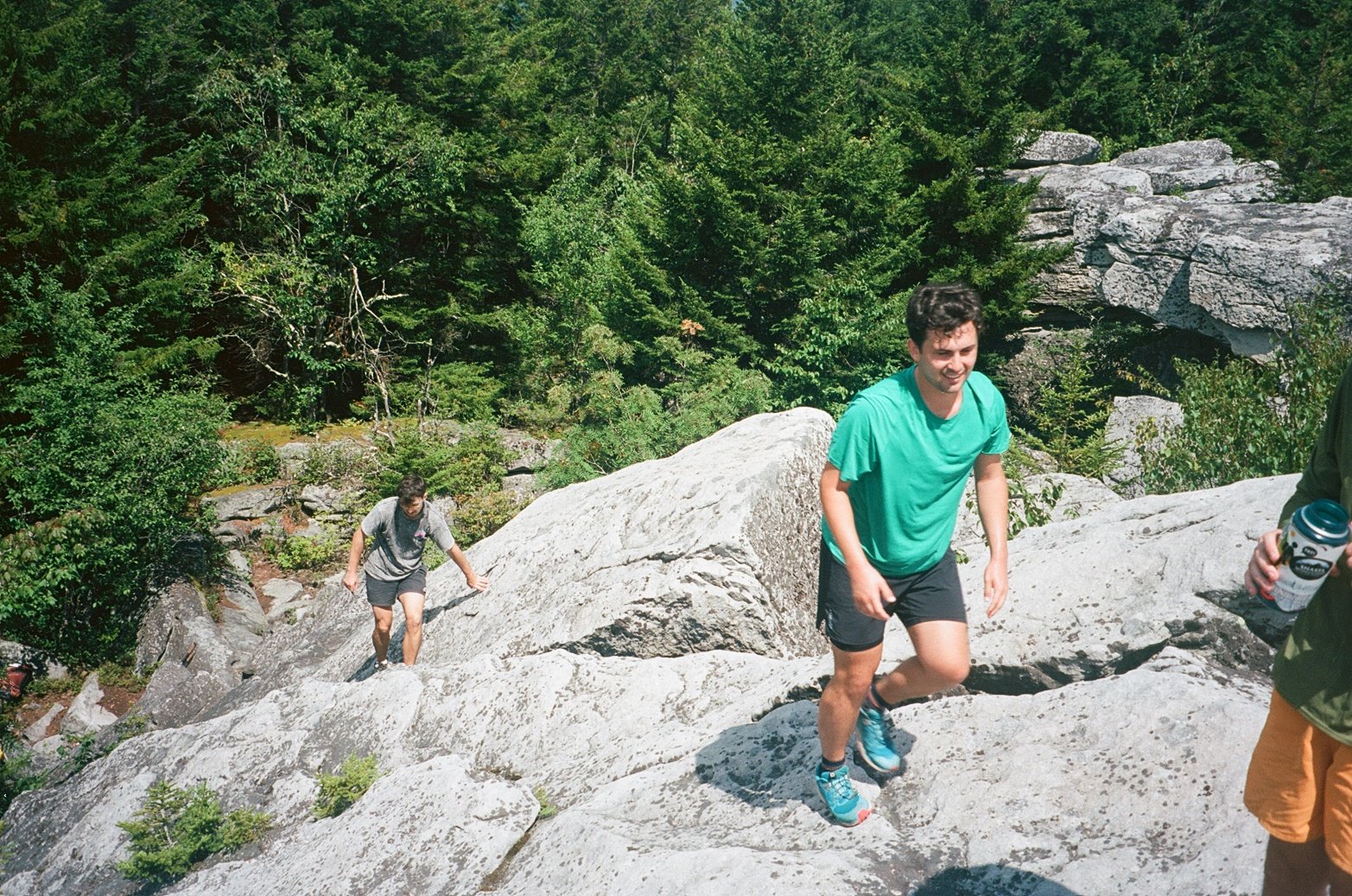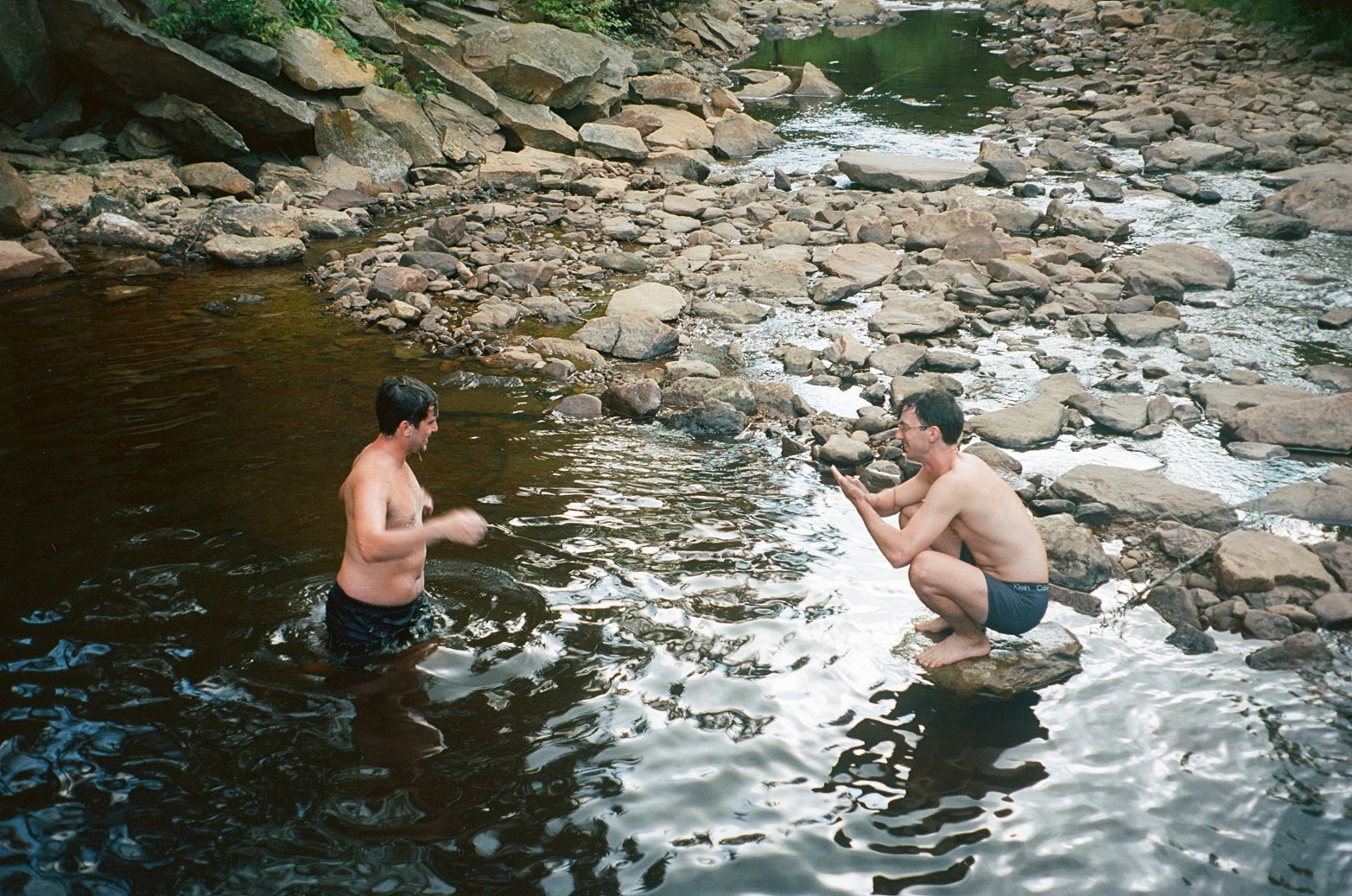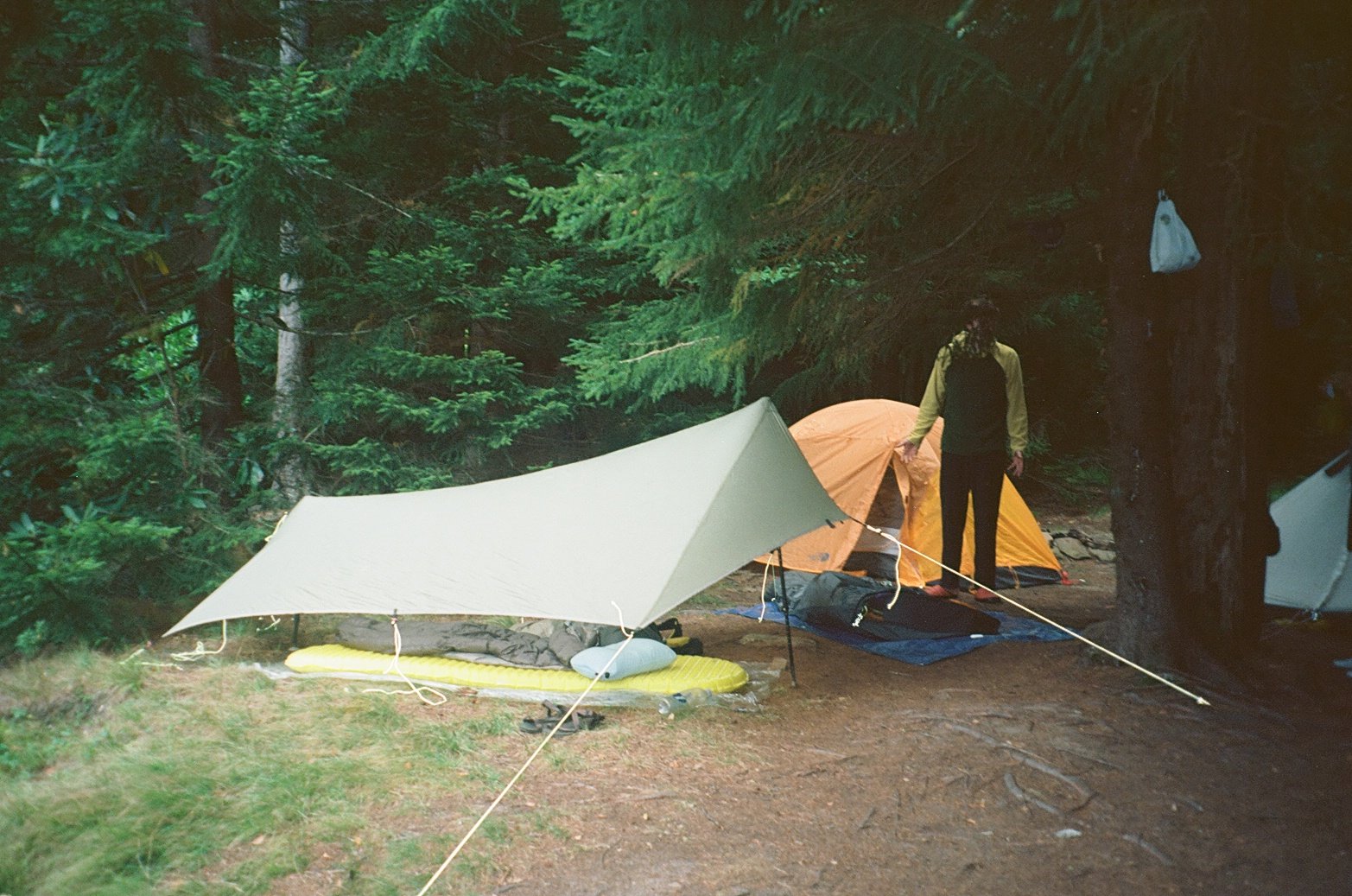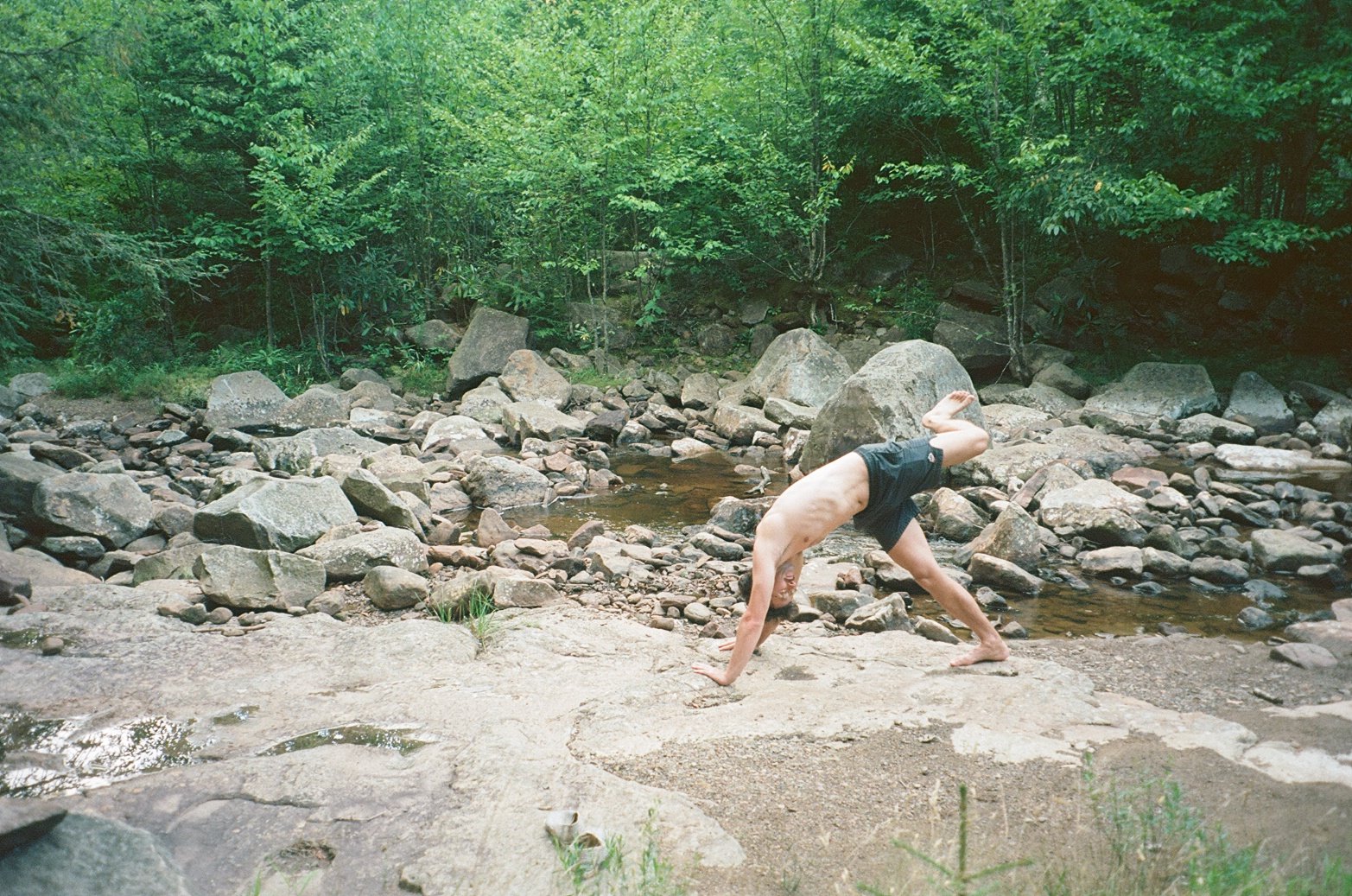A Love Letter to Dolly Sods
Shot on an Olympus Infinity Zoom 210 with Ektar 100 film
Out of everywhere I’ve adventured on the east coast, Dolly Sods Wilderness Area is by far the most special to me. I discovered my love of backpacking here on a cold, wet overnighter with my dad in eighth grade, I’ve continued coming back over and over again over the years.
Rocky Ridge Trail
It is truly unbelievable a place like Dolly Sods exists where it does. Tucked behind the edge of Canaan Valley, West Virginia, Dolly Sods Wilderness Area has its own microclimate, distinct from most of the the rest of the mid-Atlantic. Not your typical east coast deciduous forest, it is full of Red Spruce and Mountain Laurel. As a plateau which overlooks the edge of a valley that is already situated higher than the rest of the nearby land, its high elevation and unique topography seem to catch winter weather and hold onto it. In one hike, you pass through several ecosystems: soggy bogs, beautiful beaver ponds, vast meadows, and dense spruce forests with mossy floors, reminding me of Maine, or even Alaska.
As cold as it can be in the winter and shoulder seasons, it is absolutely perfect in the summer. When the rest of the mid-atlantic is held hostage by sweltering heat and humidity, Dolly Sods remains relatively cool and dry, with average highs in the mid 70s and average lows in the 50s. Just a three hour drive from D.C., it is the perfect reprieve from brutal summers in the marble swamp.
City Bumpkins “album cover”
This August, I did exactly that with my friends Max, Cole, and Addison (pictured front to back). They had all been to Dolly Sods before, but I always enjoy “showing” people my favorite routes, campsites, and swimming holes. We started by parking on Forest Road 37, on the western side of Dolly Sods, and entering at the Blackbird knob trailhead. Rather than heading straight into Dolly Sods, we hiked the perimeter on Rocky Ridge Trail, with gorgeous views of Canaan Valley to the left and Dolly Sods on the right. True to its name, this trail is full of interesting rock formations. We attempted to boulder a few in our trail runners with varying degrees of success.
When we hit the northwest corner, we turned down Raven Ridge trail into the heart of the Dolly Sods. The landscape opened up into rolling meadows and beaver ponds. We made quick work of this section, traversing across Upper Red Creek trail, passing by Blackbird Knob, and eventually diving down Red Creek trail until it converged with Spring Creek. Campsites were plentiful, and we made camp around 4 pm, overjoyed to have plenty of time to relax and indulge in some swimming and Stumptown Ales (the best beer in the West Virginia).
Please sponsor us, Stumptown!
This particular group of campsites sees heavy use, so firewood was sparse. We spent the better part of an hour searching and we managed to scrounge some up. We kept our fire modest to preserve the wood and we engaged in some philosophizing as bed-time grew nearer, attempting to decode some Gen Z terminology: What does it mean to be “coded” something versus just “pilled"?” We concluded being “coded” refers to an intrinsic characteristic, while merely being “pilled” implies a recent change or transformation. Enough of that—time for bed.
The night-time summer temperature of Dolly Sods was immaculate and the sound of the stream gently lulled us to sleep. I woke up a several times throughout the night and enjoyed the moonlit view of the stream from underneath the edge of my tarp.
My $30 AliExpress tarp in all its glory
We woke up naturally with the sunlight and stirred. We each brought a different coffee making device, and began our morning at a leisurely pace. Cole brought an Aeropress—the tried and true backcountry coffee brewing tool. Addison brought a Moka pot—delicious results but quite trad of him. I brought “tea” bags of Folgers coffee in an attempt to be Ultralight—utterly disgusting.
Morning yoga
Once we began hiking again, we hastily made our way up and out of the canyon on Red Creek and then Rocky Point trail. I knew what was in store but the rest of the gang didn’t—we scrambled up a short but steep ascent of Breathed Mountain and entered a beautiful grove of tall, skinny pine trees lined up in perfect rows because they were planted in a reforestation effort.
We walked past a couple having some leisurely morning coffee at their campsite and ducked through the Mountain Laurel, emerging on to cliffs. This was Lion’s Head, perhaps the most magnificent view in all of Dolly Sods. Unfortunately, I did not snap any film of the rock formation from the angle where you can see the actual “Lions Head,” but Max caught it on his DSLR— a real photographer’s stand off!


Shooting the photographers
Finally, we descended Breathed Mountain and started to head back to the car on Big Stonecoal trail. We took our time, meandering through the woods and enjoying the waterfalls, beautiful pine groves, and lush fern meadows.
Dolly Sods will forever hold a special place in my heart, and I will forever recommend it to people. As I say this however, I must acknowledge its explosion in popularity and heavy use in recent years. If you do visit, please treat it with respect and abide by the Leave No Trace philosophy. It goes without saying—don’t litter, chop down live trees, or build kearns. Make sure this magical place stays magical for the next generation!
Here is a film gallery of another one of my other Dolly Sods hikes, this time in May. You can really see how far behind the rest of the mid-atlantic it is in regards to the change of seasons. Enjoy!










